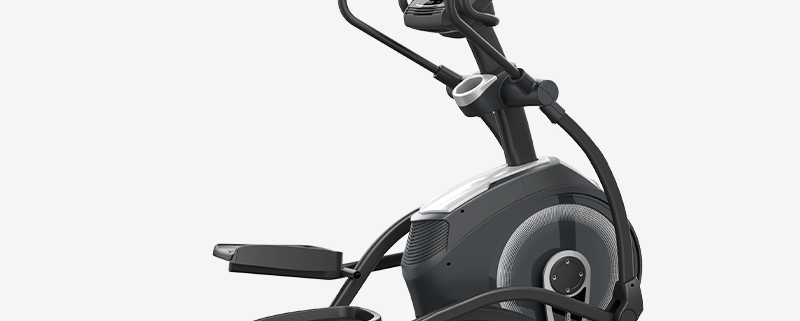Are Ellipticals Bad for Knees? An Expert Guide to Joint-Friendly Cardio
For individuals with knee concerns or those seeking a safe, effective workout, a common question arises: Are ellipticals bad for knees? The short answer is a resounding no; in fact, ellipticals are widely regarded as one of the most knee-friendly cardiovascular machines available. This article delves into the mechanics of the Elliptical, explores its impact on joint health, outlines its numerous benefits, and provides guidance on selecting the best Elliptical for your home gym, with a focus on the durable options available from HARISON.
What’s The Elliptical Machine and Its Mechanism
Often called an Ellipse leg exerciser, the Elliptical machine is designed to provide a fluid, low-impact motion. Unlike running or jogging, where each step creates a forceful impact through your knees, ankles, and hips, the Elliptical keeps your feet firmly planted on pedals that move in a continuous oval path. This smooth, gliding motion significantly reduces the compressive forces on your joints. The machine also typically features movable handles, allowing you to engage your upper body for a full-body workout that increases calorie burn without adding extra strain to your lower body.
The Impact of Elliptical Training on Knee Joint Health
The primary reason ellipticals are recommended for knee health is their low-impact nature. The motion is gentle on the articular cartilage and does not place the stressful, jarring loads on the knees that are associated with high-impact activities. Furthermore, using an Elliptical can be therapeutic. It helps to strengthen the quadriceps, hamstrings, and glutes—the key muscle groups that support and stabilize the knee joint. Stronger leg muscles act as natural shock absorbers, protecting the knees not only during workouts but in daily life as well. For those in rehabilitation or with conditions like arthritis, the controlled motion of a Ellipse leg exerciser can help maintain mobility and strength safely.
Key Benefits of Using a Commercial-Grade Elliptical Trainer
Investing in a robust machine, like the commercial elliptical trainers from HARISON, offers benefits that extend far beyond knee safety.
Full-Body Cardiovascular Workout: The combination of lower-body pedaling and upper-body arm action ensures a comprehensive cardio session that elevates your heart rate efficiently.
Calorie Burning and Weight Management: This efficient full-body engagement means you burn more calories in a shorter amount of time compared to lower-body-only machines, aiding in weight management which further reduces stress on the knees.
Versatility and Adjustability: High-quality models come with adjustable resistance levels and incline settings. This allows you to vary your workouts, target different muscle groups, and continuously challenge your body without increasing joint impact, making it a versatile Elliptical for all fitness levels.
How to Choose the Best Elliptical for Home Use
Selecting the best elliptical for home requires careful consideration to ensure it meets your fitness needs and space constraints.
Stride Length and Smoothness: Look for a machine with a comfortable, natural stride length. A too-short stride can feel cramped and be less effective. HARISON ellipticals are engineered with an ergonomic stride path for a smooth motion.
Build Quality and Stability: A sturdy frame is non-negotiable for safety and durability. Models built to the standards of commercial elliptical trainers,
like those from HARISON, offer superior stability and longevity, even for intense daily home use.
Features and Resistance: Consider magnetic resistance systems for quiet operation and a wide range of challenge levels. Additional features like preset workout programs and heart rate monitoring can enhance your training experience.
Conclusion: Ellipticals Are a Safe and Effective Choice
In conclusion, ellipticals are not bad for your knees; they are an exceptional tool for achieving cardiovascular fitness while prioritizing joint health. The low-impact, fluid motion of the Ellipse leg exerciser builds strength and endurance without the damaging effects of high-impact exercises. By choosing a well-constructed machine from a reputable brand like HARISON, you are investing in a long-term fitness solution that supports your knee health and overall well-being, making it the best elliptical for home workouts for a wide range of users.
Frequently Asked Questions (FAQ)
Q1: Can I use an elliptical if I have arthritis in my knees?
A1: Yes, in most cases, using an Elliptical is highly recommended for individuals with knee arthritis. The low-impact motion helps to lubricate the joints and maintain range of motion while strengthening the surrounding muscles, which can help alleviate pain and stiffness. Always consult your doctor before beginning.
Q2: What is the difference between a regular Elliptical and a commercial elliptical trainer?
Commercial elliptical trainers are built with heavier-duty frames, more powerful motors, and higher-grade components to withstand constant use in a gym setting. This makes them exceptionally durable and smooth for home use, offering a superior long-term investment compared to many lighter home models.
Q3: How does an Elliptical compare to an exercise bike for knee pain?
A3: Both are excellent low-impact options. An Elliptical provides a weight-bearing workout, which is better for bone density, and engages more upper-body muscles. An exercise bike is non-weight-bearing. The best choice depends on your personal comfort and specific condition.
Q4: What features should I look for in the best elliptical for home use?
A4: Prioritize a smooth stride, a solid and stable frame, adjustable resistance and incline, and a comfortable design. HARISON fitness equipment incorporates all these features, ensuring you get a safe, effective, and enjoyable workout experience.
Q5: Are HARISON ellipticals suitable for tall or short users?
A5: Yes, HARISON designs its ellipticals with an adjustable stride and handlebars to accommodate users of various heights. It is always advisable to check the specific product specifications for the recommended user height range to ensure a perfect fit.




Leave a Reply
Want to join the discussion?Feel free to contribute!